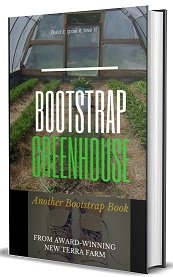2019 Farm Review Part 1 - The Good, the Bad and
the Somewhat
Just got my seed catalogs in the mail, always a cheerful thing in the Great White North in January. Looking forward to the 2020 season, but first let's review 2019 successes and not-so-much's at New Terra Farm.
We always try a few new things every year, here's how these
trials went.
2019 Farm Review - the Successes
Greenhouse tomatoes. We grow a lot of tomatoes every year, and have a few ‘ old standby ’ cultivars that always produce well for us both outdoors and in our hoophouse.
This year for the first time we tried some actual greenhouse varieties, and they produced very well indeed. We pruned them to a single stem and trained them up a line to the cross-bar on the greenhouse (about 9 feet up). Binder twine worked well for this, it’s strong and the plants gripped it well.
We grew Favorita and Toronjina (cherry-types) and Bolseno from Johnny’s Selected Seeds and Hamlet from William Dam Seeds. Properly trained up a string, you can plant very closely; we spaced them about a foot apart. As a result, we got huge quantities of market-ready fruit from a relatively small space. I call this one an A+ success. I will probably grow cherry tomatoes ONLY in the hoophouse next season.
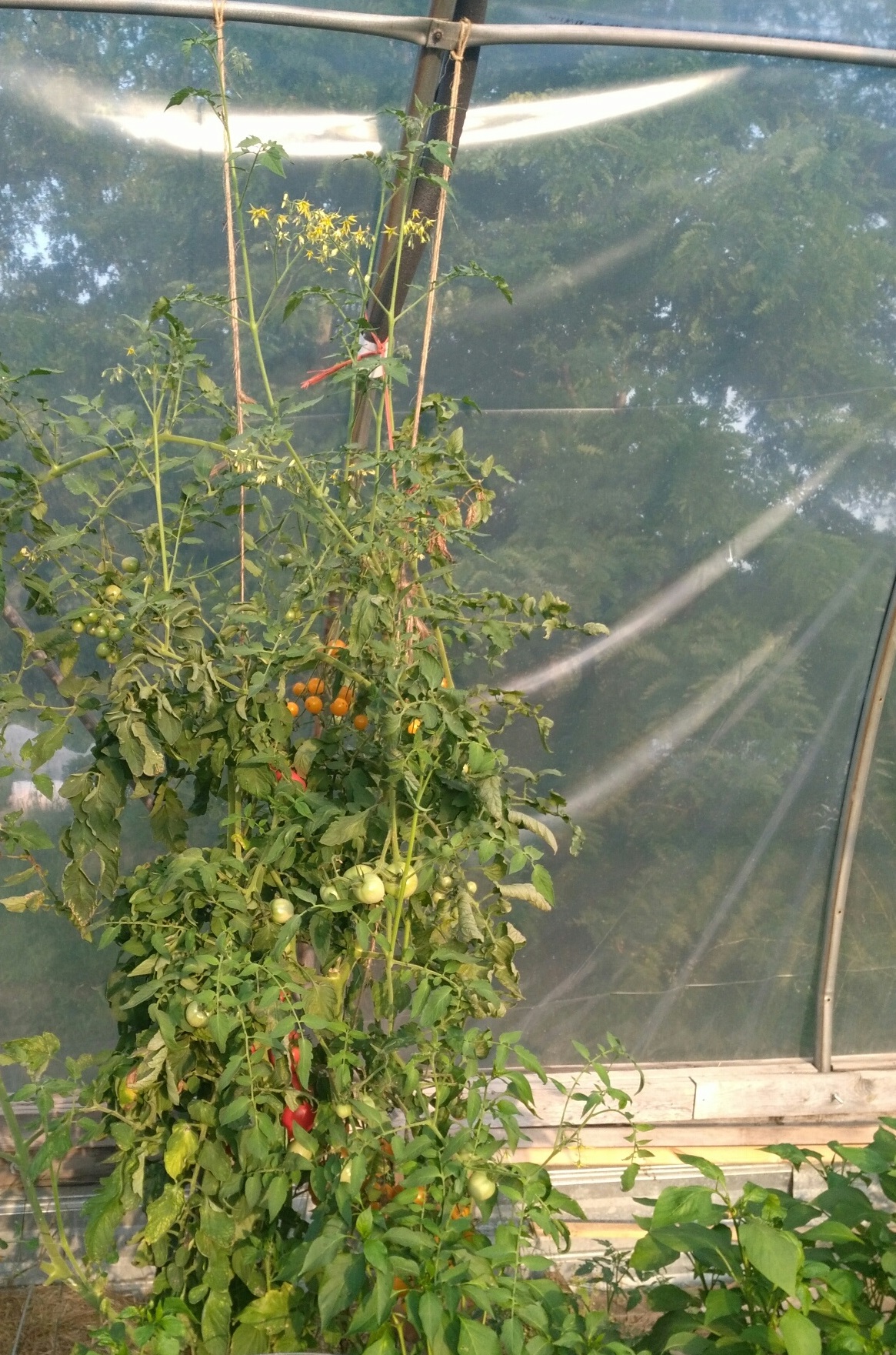 Got a TON of cherry tomatoes from the hoophouse planting
Got a TON of cherry tomatoes from the hoophouse plantingSugar Snap Peas. We decided to see how early we could push the season for a very popular crop, sugar snap pea. We pre-spouted enough Super Sugar Snap ( William Dam ) to seed a double 25-foot row in the hoophouse. We planted last week of March, and covered the planting with row cover until the seals were well up.
We set up a 7-foot high trellis using 2x2 ’ s and strong netting, and trained the peas to the trellis. We started harvesting the first week of June. We harvested a bounty of peas right through the end of the month. Early sugar snaps very popular with customers. Solid A rating.
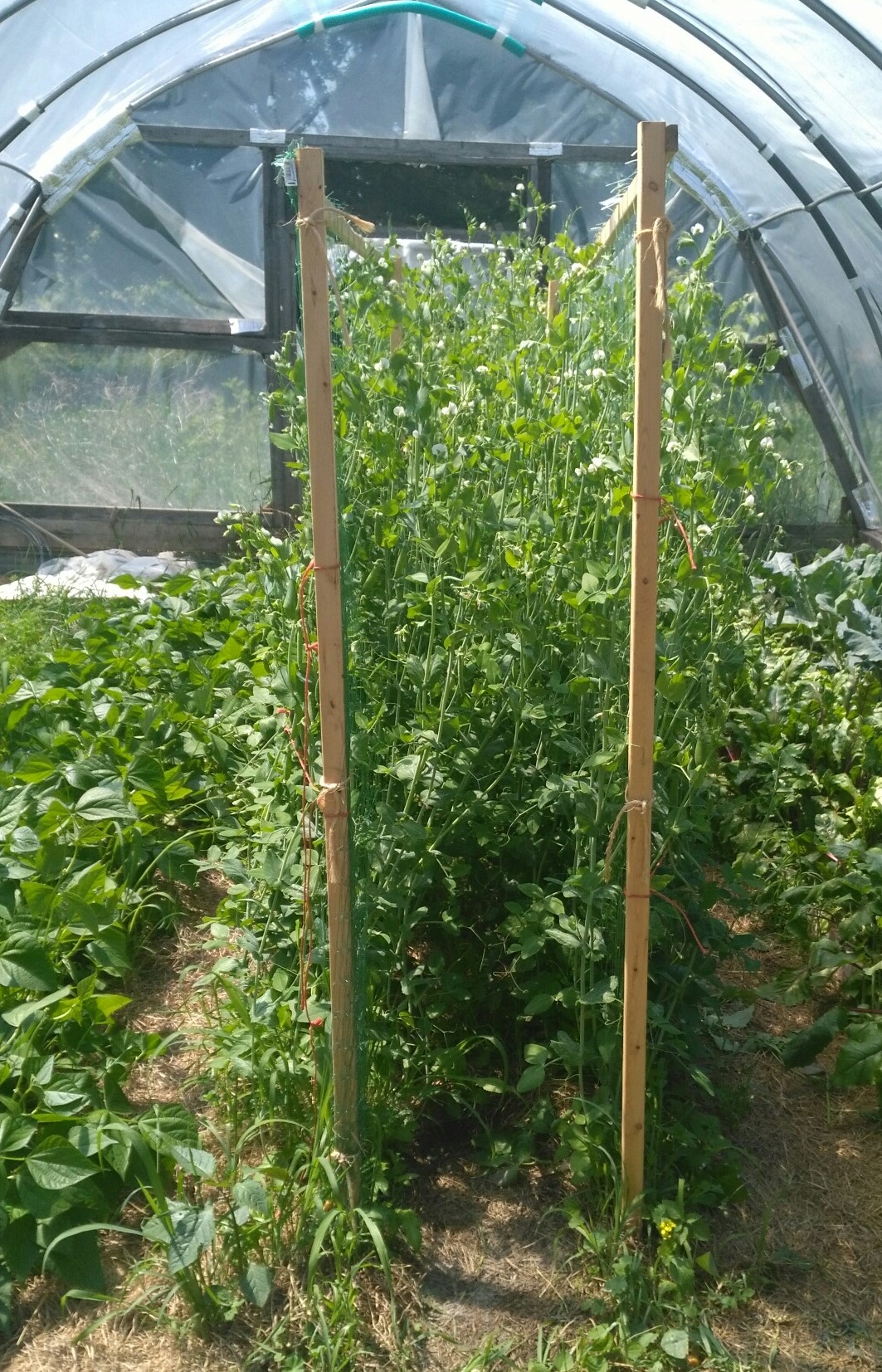 Yielded about 200 lbs. of peas
Yielded about 200 lbs. of peasLunchbox peppers. This one was a big success. I found out about these little sweet peppers from another grower in my area. This BIG farm has basically stopped growing standard bell-type peppers to grow the smaller snack type.
We inter-planted the peppers in the same bed with the cherry tomatoes, tomatoes to the west and peppers on the east side of the bed. The cherries were tied up, so lots of room in a 30-inch wide bed.
I found these little peppers ripened early and reliably. I don't think I lost a single pepper to blossom than rot, an occasional problem with standard bells. And they kept producing through the season, right up until frost. We grew the Lunchbox Orange, Red and Yellow, duck Eros and Cupid, all from Johnny's.
Bonus, you can clean one in about 5 seconds with a teaspoon, and they freeze well too. A+
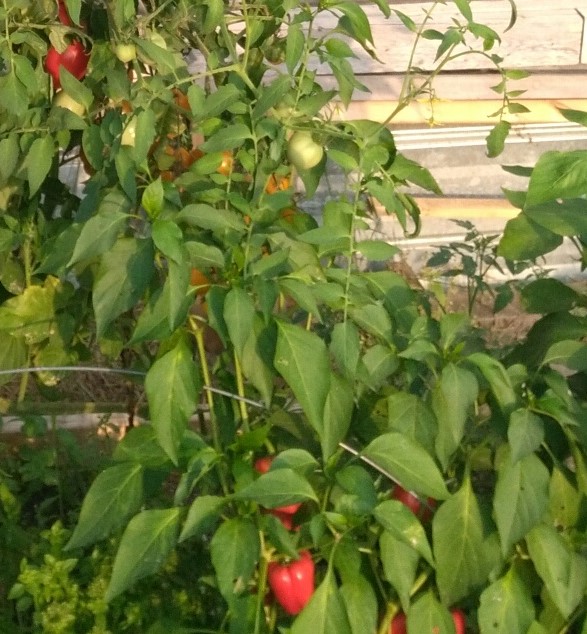 Very tasty little peppers a popular crop
Very tasty little peppers a popular cropCelery. This has always be a so-so produces in our garden. We never put a lot of effort into growing it. Maybe those two things are connected ;- ). Not a lot of money in celery, but Suzie LOVES it, so we decided to grow one bed the best we could.
We started transplants early, about 10 weeks before
our last frost date. We planted them out in a raised bed enriched with
2-year-old composted horse bedding. We watered them on schedule twice a week
( if it wasn't actually raining on watering day ). We mulched them deeply with grass clippings raked up from around
the garden. Sorry, no pics of this one.
And, we got an awesome harvest of mild and crunchy stalks that lasted through the season. We put some in our Snack Pack mixes and salads (see Semi-Successful Projects in Farm Review 2019 - Part 2). Tall Utah was the variety. I rate this one an A.
Mesclun. We had pretty much given up on growing mesclun in the field; while it is popular with customers, the amount of work required to cultivate and clean the crop made it just not worth our while.
However, we wanted to try selling value-added ready-made salads at our local market this season ( See 2019 Farm Review Part 2 - here). So we took a different approach.
We spread a three-quarter-inch layer of dampened Promix in planting trays, and lightly seeded some premixed mesclun mixes from Johnny's (Allstar Gourmet, Five Star). We fed the trays weekly with organic fish emulsion and liquid kelp.
The planting trays produced an abundance of greens, with no weeds. We kept the trays under row cover to protect from falling debris. Very little cleaning required, just basically clip, rinse, spin dry and package up for sale.
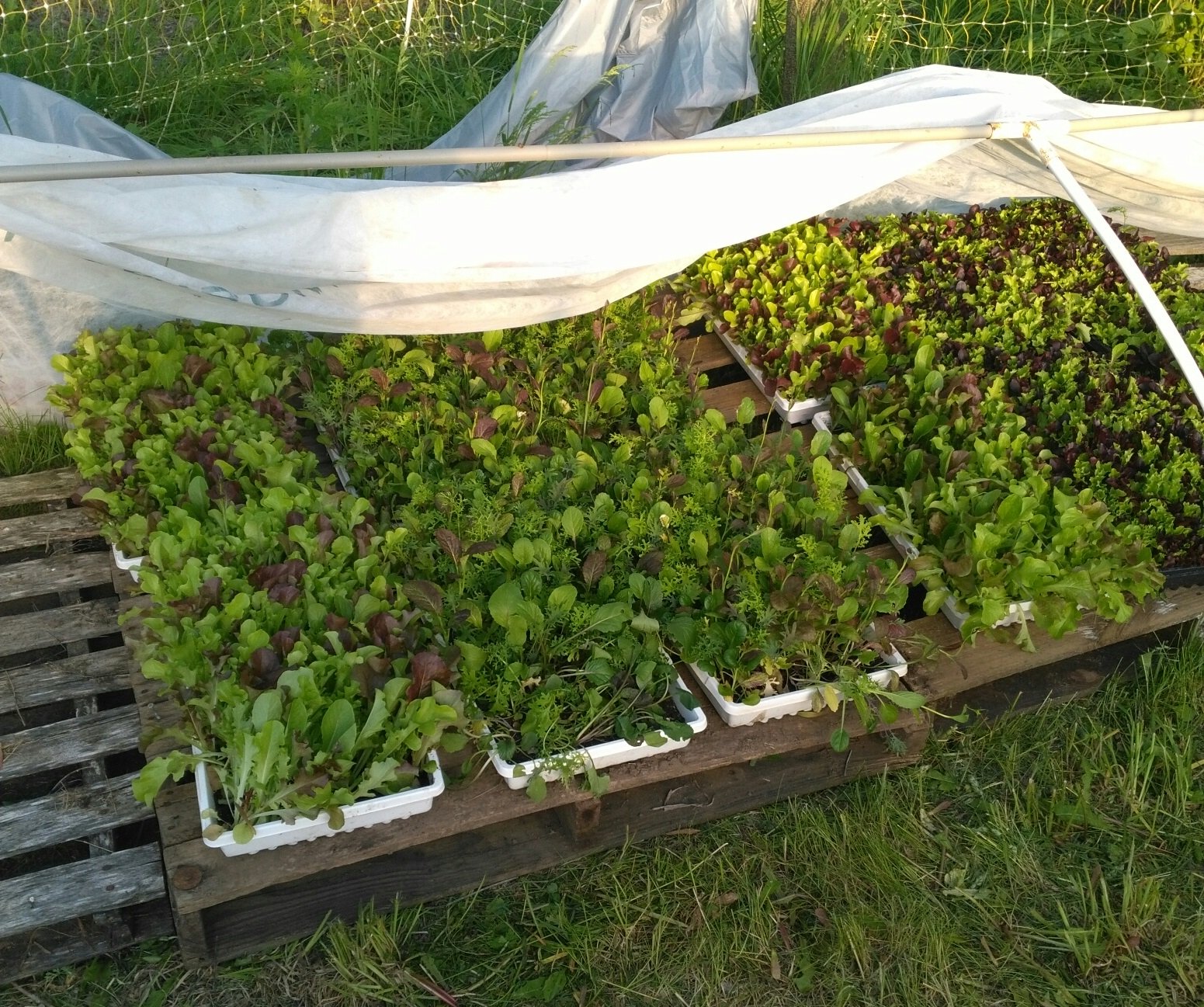 Each tray gave us two cuttings
Each tray gave us two cuttingsI planted a dozen traits each week ( 6 of each variety ), and we had an abundance of fresh baby greens all season. In the heat of summer we moved the traits to a partially shaded location, and made sure to water daily. This is the ONLY way I'll grow mesclun in the future. A +

A fellow grower lost out on $ 5,000 in her first season because of one simple mistake. Get yours FREE Market Garden Starter Guide and avoid this costly error.
Imagine building a profitable and sustainable market garden even on a small property.
Enter your email address and yours free report will be sent to you right away.
New Terra Farm Review 2019 - Part 2 here.
Want to know more about how we built and manage our three greenhouses? Check out our latest Bootstrap Book.
I spent a large part of Fa ( it's the off-season around here ) and updating my books and software.
Now ALL the new and updated books and bonuses, including Bootstrap Greenhouse, are available at a special price in my Complete Start Farming Pack.
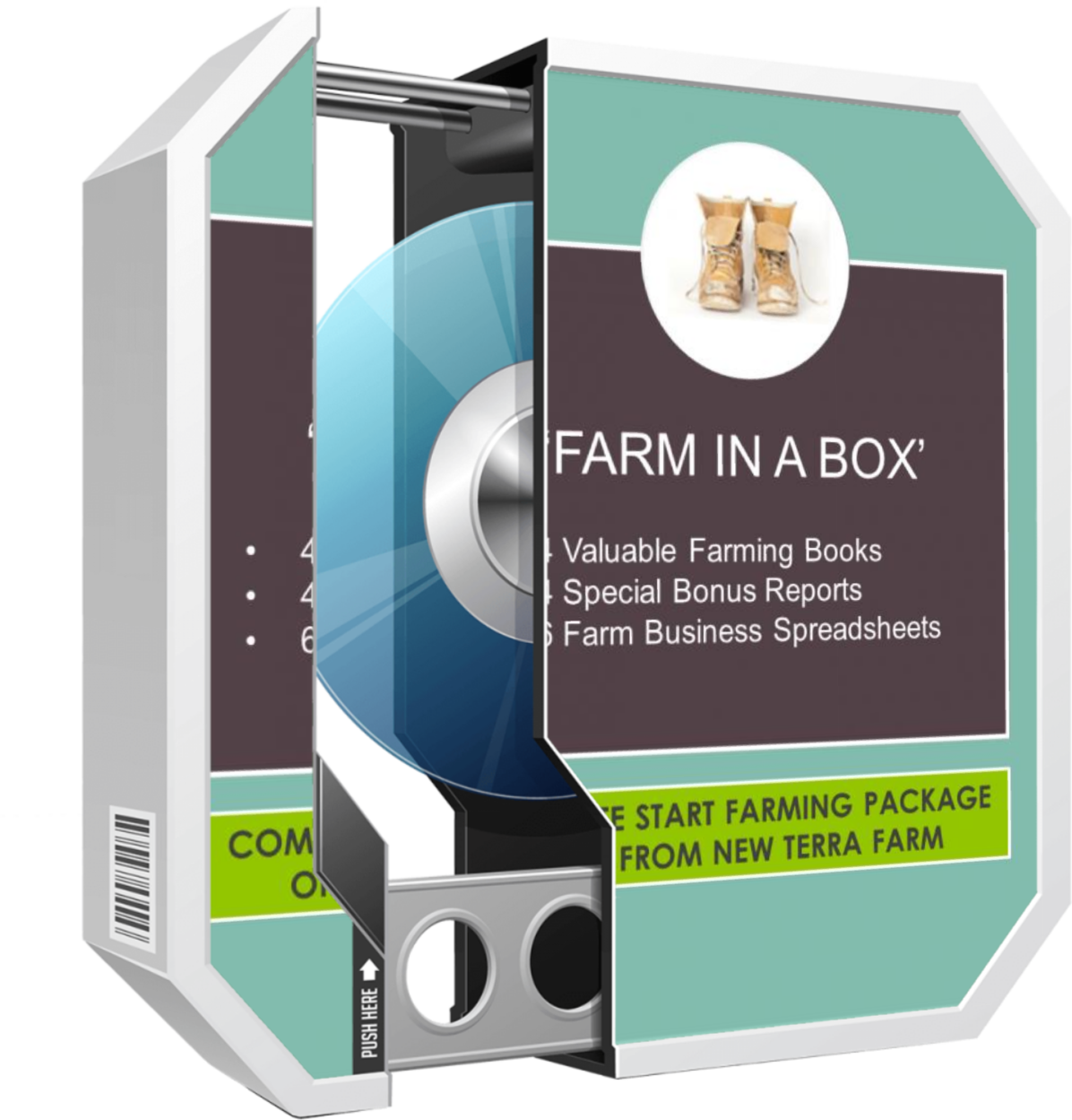 More than 20 valuable books, bonus reports, training modules and spreadsheets
More than 20 valuable books, bonus reports, training modules and spreadsheets- Home Page ›
- New Terra Farm page ›
- New Terra Farm Review Part 1
